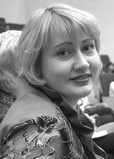Formation of Motor Skills in Junior Tennis Players Based on Indicative Activities
Фотографии:
ˑ:
PhD, Associate Professor M.V. Samoylova1
Master student N.L. Borodavkina1
1Surgut State University, Surgut
Objective of the study was to scientifically and experimentally substantiate a rational methodology for teaching a full-fledged motor action in the process of training based on orientational activity.
Methods and structure of the study. The study involved interviewing, measuring physical parameters of motion (speed, coordination, stroke accuracy) and formative experiment. The study was conducted on the basis of the Autonomous Institution "Yugra-MegaSport" (Khanty-Mansi). Two strategies for the formation of motor actions were used simultaneously: "top-down" (from general concepts of action, its purpose, etc. —general orientation in the mastered action) and "down-top" (from fixing movement at control points to integral movement).
The specific feature of the project was that the actual training process was to be combined with the psychological support.
A total of 18 tennis players aged 10-11 years were sampled for the study. All of them were at the stage of initial training. They were divided into 4 groups: two Control Groups (CG1, CG2) and two Experimental Groups (EG1, EG2), 4 people in EG1 and CG1, and 5 people in EG2 and CG2.
Results of the study. In a shorter period (in just 9 weeks), all EG athletes developed a more accurate sports movement. The trainers noted that the EG children felt more free and made more effective serves not only in training but also in competitive conditions. The individual technique of sports movement (backhand, forehand, serve) improved in all EG subjects.
Conclusion. Despite the similar initial level of physical fitness, in the post-control study the EG athletes were found to be more accurate in the technique of basic tennis strokes as opposed to the CG athletes.
Keywords: formation of motor skills, technical (initial) training of a tennis player, development of physical actions.
References
- Bernstein N.A.; Zinchenko [ed.] Biomehanika i fiziologiya dvizheniy: Izbrannyie psihologicheskie trudy [Biomechanics and physiology of movements: Selected psychological works]. 2nd ed.. M.: MPSI Publ.; Voronezh: MODEK publ., 2004. 688 p.
- Bogen M.M. Pedagogicheskiy analiz tehniki orientirovochnoy chasti dvigatelnogo deystviya [Pedagogical analysis of technique of approximate part of motor action] [Electronic resource]. Available at: www // http: bibliofond.ru
- Galperin P.Ya. Metody obucheniya i umstvennoe razvitie rebYonka [Teaching methods and mental development of child]. M.: MU publ., 1985. 45 p.



 Журнал "THEORY AND PRACTICE
Журнал "THEORY AND PRACTICE